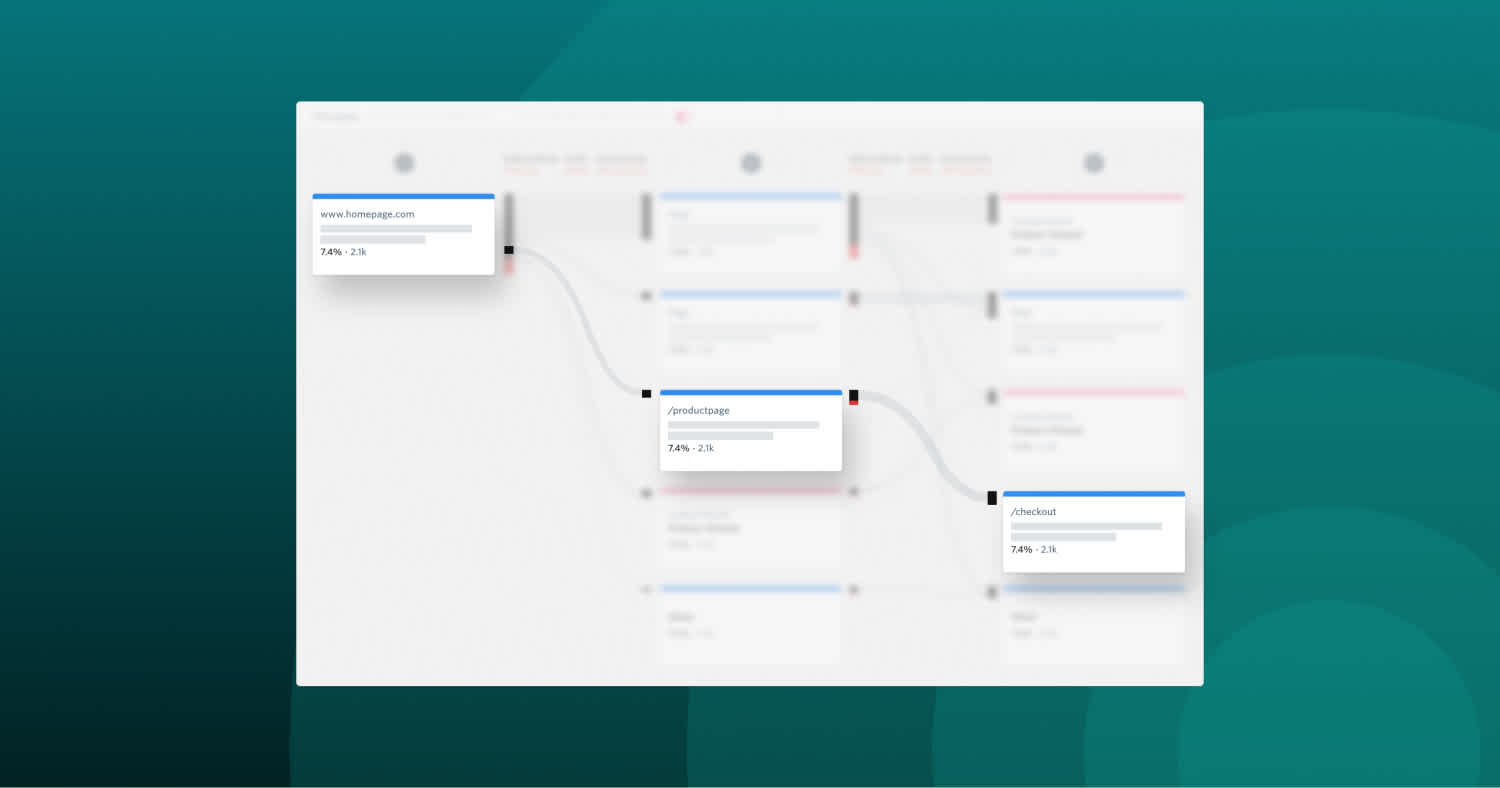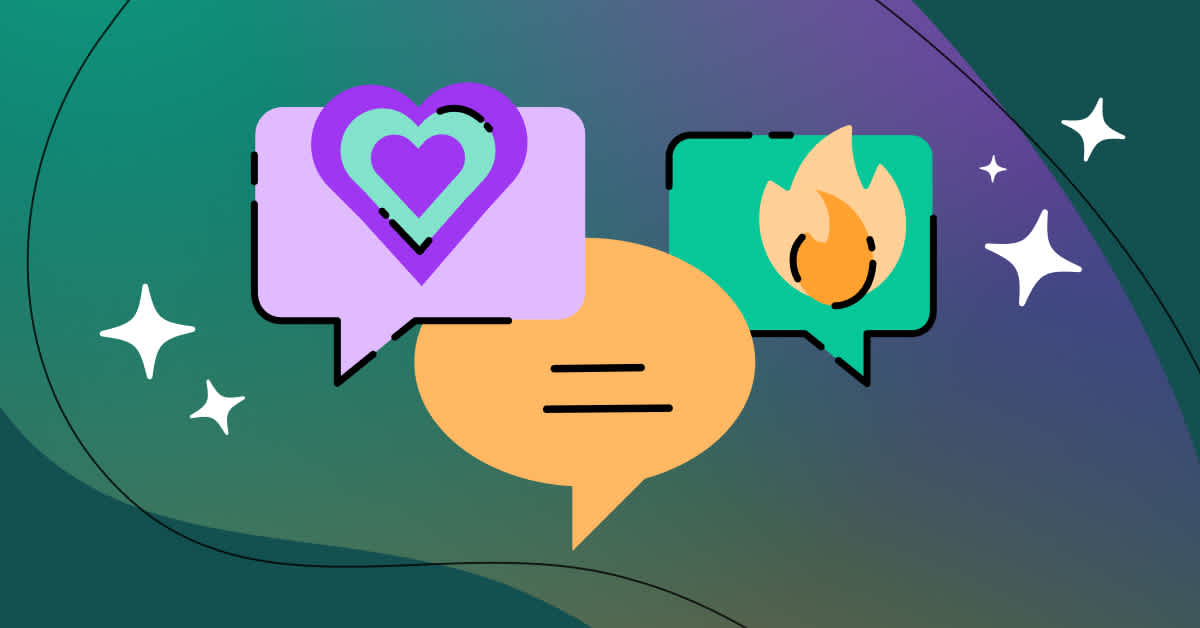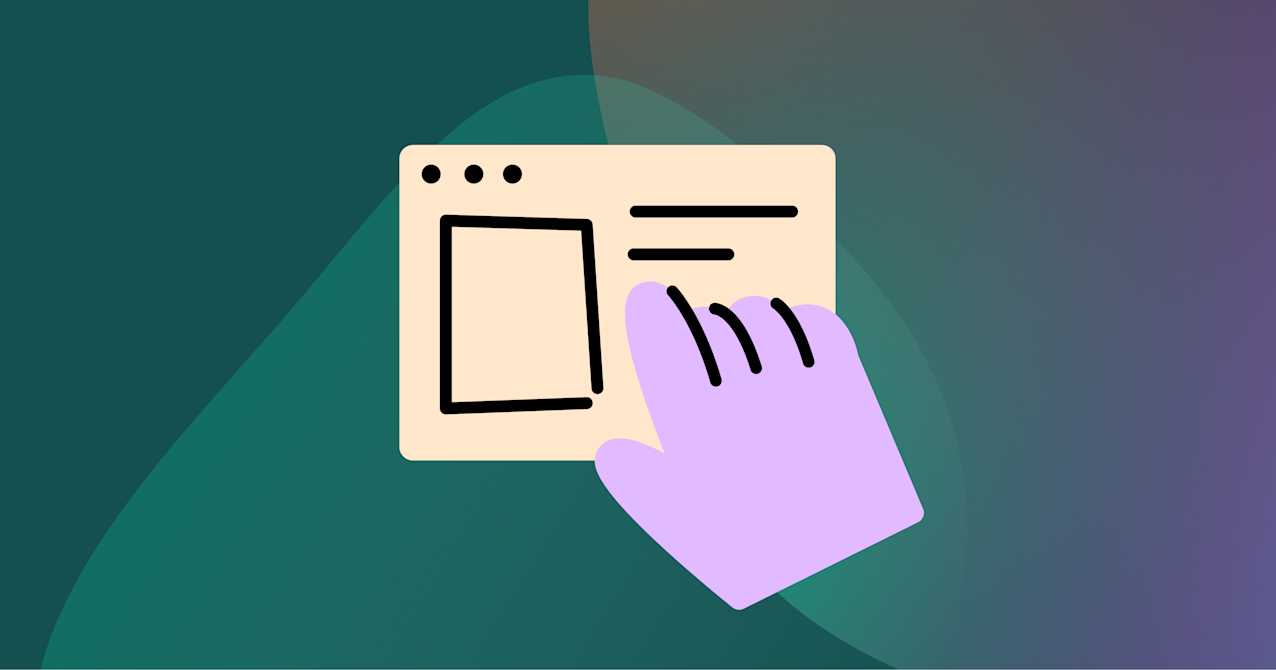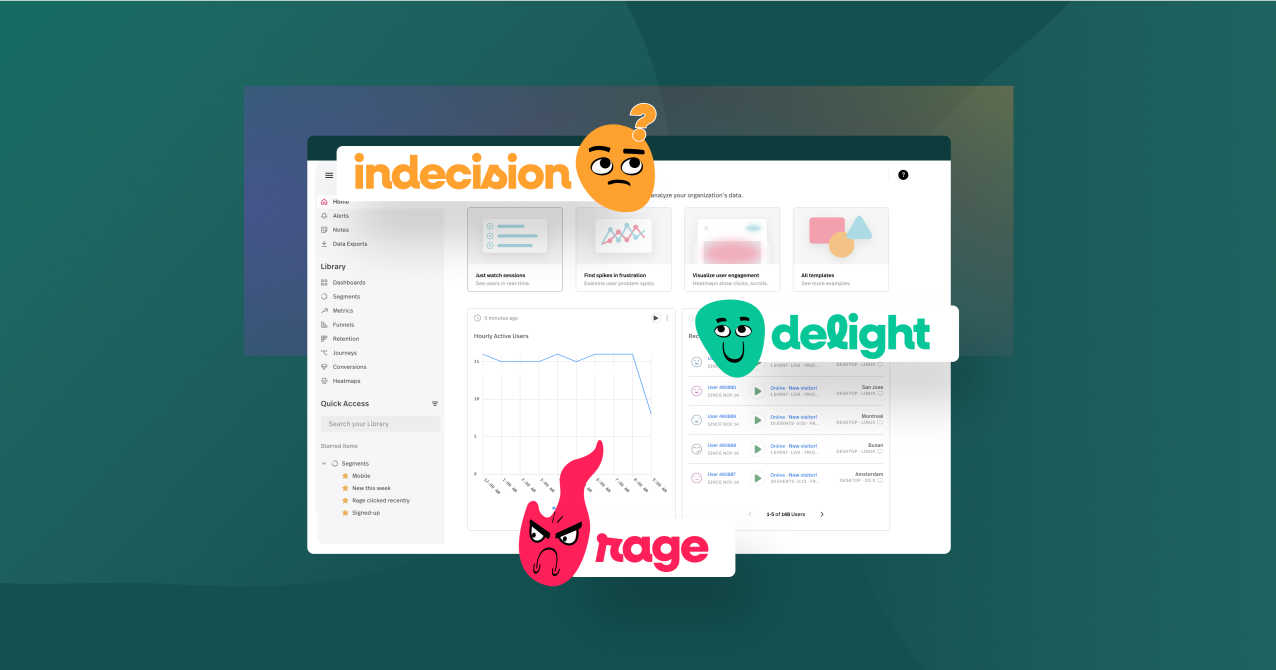The customer journey is a long and often unpredictable road. Understanding it can be even more complicated.
That’s why customer journey maps were invented: to understand a customer’s roadmap from the very first touchpoint throughout the lasting life of their relationship with your business. Customer journey maps help organizations see the process from the customer's perspective, ensuring a more empathetic and accurate understanding.
Customer journey maps (or user journey maps) can be invaluable resources for companies, from marketing to sales to UX. These maps are built on real customer behaviors, not assumptions, which ensures they reflect actual actions, attitudes, and emotions. If done correctly, they are known to help businesses increase their ROI by 13–22%. The benefits of customer journey mapping include improved satisfaction, increased loyalty, and better business outcomes.
We’ll cover journey maps from top to bottom, their importance and characteristics, and review examples, along with what you need to make your own.
Looking for a video? Watch how to create a journey map using Fullstory, as Lane provides a detailed breakdown of the process to uncover Popular Paths on a website.
>> Jump to see how to create a customer journey map
What is a customer journey map?
A customer journey map (sometimes called a user journey map) visualizes the touchpoints and experiences a customer has with a brand, and its digital product or application, helping teams understand the entirety of the customer's journey.
While customer journey maps visualize the path users take, customer journey analytics provide the data-driven insights needed to optimize every touchpoint across all channels.
Companies can use this shared understanding to identify opportunities for innovation and improvement.
These maps can be simple or complex, depending on the depth of the customer's experience you want to capture and what you’re looking to gain from them.

Validate your user experience with real behavior
Watch sessions and find hesitation points with 12 months of session insights.
✓ 30,000 free monthly sessions
✓ 12-month analytics retention
X No credit card needed
Why do you need a customer journey map?
For any company, a customer journey map helps to enhance the customer experience and increase customer loyalty.
A customer journey map can prove invaluable for optimizing across multiple departments—marketing, sales, product, and customer service—in many, many ways. Mapping your customer journey can help you:
Glean customer journey insights into your audience that can drive revenue
Improve sales funnels & conversion rates authentically
Test and optimize specific touchpoints through A/B testing to improve conversion rates
Amplify customer experience by understanding the customer’s perspective
Reduce customer support tickets by locating customer pain points
Decrease customer churn and increase customer lifetime value
Increase customer satisfaction by identifying and addressing pain points throughout the journey
Together, these advantages translate into higher sales for your business. By mapping the journey, you can create more satisfied customers, which leads to greater advocacy and loyalty. Additionally, journey mapping helps boost customer retention by improving the overall experience and addressing issues before they impact loyalty.
Characteristics of customer journey maps
A typical customer journey map includes:
Actors: The person experiencing the journey. This is usually a customer, but it could also be a user, employee, or partner. It’s important to consider different customer segments, as each segment may have unique experiences, behaviors, and needs that should be accurately represented in the map.
Scenario and expectations: The specific experience being mapped and what the actor expects to achieve.
Phases: The high-level stages of the journey, such as awareness, consideration, purchase, and post-purchase.
Actions, mindsets, and emotions: What the actor is doing, thinking, and feeling at each stage.
Opportunities: Insights and areas for improvement identified through mapping. Journey mapping provides a deeper understanding of customer needs and pain points, enabling teams to make more informed decisions and drive innovation.
Identifying key touchpoints—critical moments where customers interact with your business—is essential for an effective customer journey map. These touchpoints help reveal customer emotions, behaviors, and pain points, allowing for targeted improvements that enhance the overall experience.
Customer personas and buyer personas: What’s the difference?
A buyer persona is a profile that showcases your ideal customer based on existing customer data and market research. Buyer personas help humanize the ideal customer you are trying to attract, which helps you understand them better and pick the right marketing strategy to convert them.
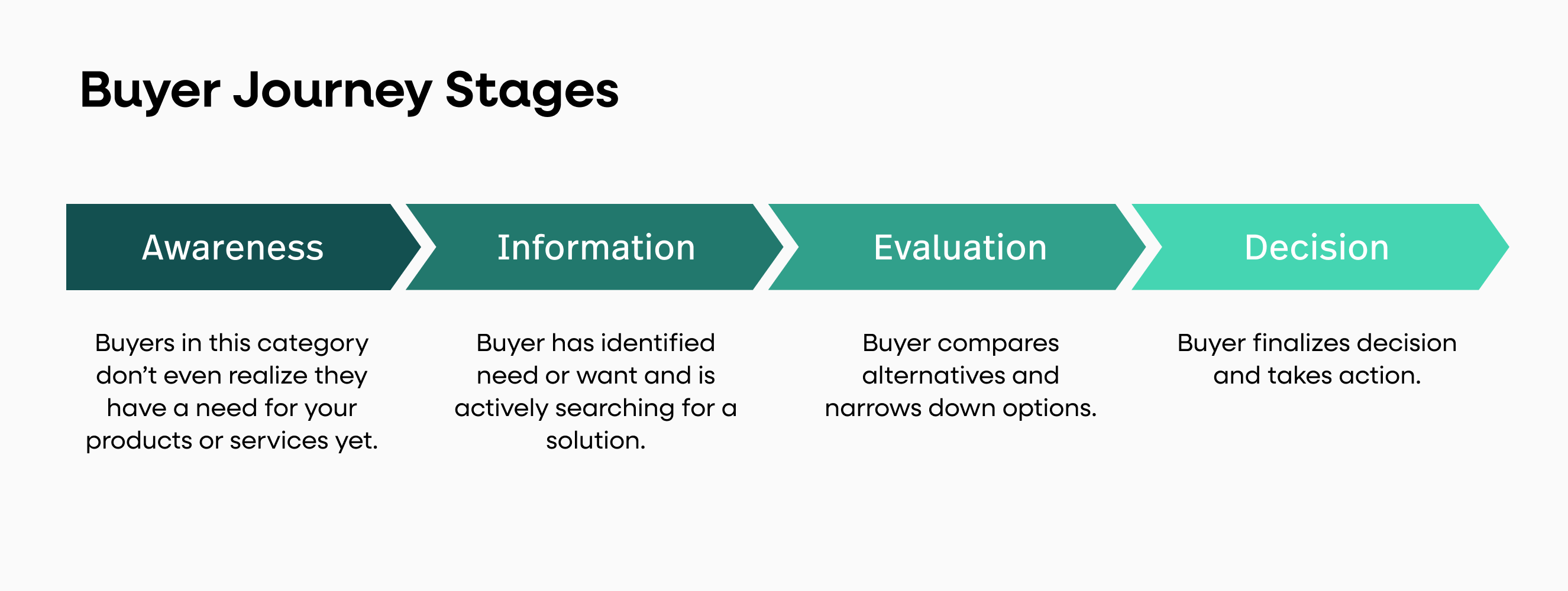
A buyer persona is your ideal customer—they’re in research mode. You can have more than one buyer persona for your company, and understanding this buyer is the key to creating a successful customer experience. Different customer segments can have unique journeys and should be mapped separately to accurately reflect their distinct experiences, behaviors, and needs. This buyer will turn into your customer.
Here’s what makes up your buyer persona:
Demographics—including personal, professional, and specific (age, gender, location, education, income, marital status, skills, routines, etc.)
Goals—including personal and professional, priorities, and challenges
Values—including personal and professional, and what they find to be important in products and companies
Preferences—including the content they consume, their communication choices, communities, groups, or associations, and how they spend their day, on and offline
Customer journey stages
Journey phases are the different high-level stages in the customer roadmap. They provide organization for the rest of the information in the journey map (actions, thoughts, and emotions).
The stages will vary from scenario to scenario, and each organization will usually have data to help it determine what these phases are for a given scenario. Often, you will see the awareness stage as the initial phase, where customers recognize a need or problem. This is followed by the consideration stage, where customers compare options, evaluate brands, and seek information to determine the best solution.
Other common phases include research, evaluation, and decision-making in the buyer's journey, which is the overall process from awareness to decision.
Customer expectations
Journey maps are best for scenarios that involve a sequence of events, describe a process, or might involve multiple channels.
Pain points are a specific problem that customers or prospective customers of your business are experiencing in the industry. When identifying and addressing pain points, it is crucial to understand customer sentiment, as these emotions often drive their motivations and decisions throughout the journey.
Scenarios can be real (for existing products and services) or anticipated—for products that are yet in the design stage.
Actions, mindset, and sentiment
Every customer has a particular action that they take, because of a mindset that they have and will express it in their own sentiment
Actions: When a customer engages with your brand with a purpose. Mapping each customer's interaction with your brand at every touchpoint helps identify opportunities for improvement and reveals gaps or pain points in the experience.
Mindset: Correspond to users’ thoughts, questions, motivations, and information needs at different stages in the journey.
Emotions: How customers feel about your brand, whether positive, negative, or neutral. Plot these emotions in a single line across the journey phases, signaling the emotional highs and lows of the experience.
Opportunities
Opportunities of a customer journey map are desired outcomes. Maps should include key components, which can depend on the goal of the user journey mapping initiative.
Opportunities are also insights gained from mapping—they speak to how the user experience can be optimized. Journey mapping provides valuable insights that can drive innovation and further optimization by revealing pain points and areas for improvement.
To create a customer journey map, identify the personas, map the triggers that lead to desired outcomes, and discuss opportunities.
What are customer journey touchpoints?
Customer journey touchpoints are individual transactions through which the customer interacts with a business.
There are about 5–7 minimum touchpoints along a customer journey. Customer journey touchpoints for omnichannel brands are everywhere:
social media posts
product demos
live chats
advertisements
brick and mortar visits
website(s) clicks
At each of these touchpoints, customers interact with brands across multiple channels and moments, shaping their overall experience.
You’ll also have the added returning customer touchpoints to consider—like how engaged they are with your product, if they are returning to your website or if they are attending your events for the second or third time.
Examples of customer touchpoints
Identifying each touchpoint is crucial for creating a customer journey map that will drive a better customer experience. Once you’ve identified the touchpoints, list out possible customer actions for each.
Some actions that derive from customer touchpoints might be:
Downloading an eBook
Clicking on your FAQ
Requesting a demo or call
Subscribing to your blog
Clicking a paid ad
Engaging in customer service interactions, such as reaching out for support, providing feedback, or resolving issues after purchase
It’s important to know which touchpoints to invest time and resources into. Your map maps out the areas you can improve, retain and scale.
Types of customer journey maps
Each customer journey map has a different objective and business focus. Journey maps can cover the entire customer lifecycle, from initial awareness to post-purchase engagement, helping organizations understand and manage each phase of the customer relationship. There are six types to familiarize yourself with:
Current state—These illustrate what customers do, think, and feel as they interact with your business currently. A current state customer journey map helps identify gaps, pain points, and opportunities for improvement in the existing experience.
Future state—These illustrate what customers will do, think, and feel as they interact with your business in the future. This type of map is used to visualize the ideal customer journey, helping organizations optimize interactions and align efforts to meet customer needs.
Day in the life—These examine everything that customers or prospects do, think, and feel (within a specific area), whether that involves your product or not.
Service blueprint—This is a diagram that usually starts with a basic version of an existing or future state journey map.
Circular—These are used for subscription-based models to visualize the customer journey as a circle or loop. This helps reinforce the importance of customer retention and lifetime value.
Empathy—These are used to create a shared understanding around the wants, needs, thoughts, and actions of a customer.
Creating multiple customer journey maps for different scenarios or customer segments provides a more comprehensive view of customer needs and perceptions throughout their experience. To learn best practices and identify gaps, review customer journey mapping examples that illustrate how to effectively create and analyze these maps.
Compare types of journey maps
Journey maps are meant to be used as a strategic planning tool. By mapping out the customer experience, organizations can identify opportunities to design a more efficient customer journey, optimizing processes and reducing friction at every touchpoint. Use these definitions to guide you towards aspects of other methods that your team has not previously considered, with the goal of achieving an efficient customer journey through mapping and process optimization.
Journey map vs. experience map
A journey map is specific to a product or service, while an experience map is more general and can be used outside of a business's scope.
Since experience maps are more generic in nature, they can also be used to find pain points in a product or service for a future journey map.
Journey map vs. service blueprint
If journey maps are a product of experience maps, they will need a blueprint to direct them there.
Service blueprints are a continuation of journey maps in the service industry. They lead the roadmap for service-based customer journeys.
Journey map vs. user story map
User stories are used in Agile to plan features or functionalities, much like a future customer journey map.
In the user story map case, each feature is condensed down to a deliberately brief description from a user's point of view. The typical format of a user story is a single sentence:
“As a [type of user], I want to [goal], so that [benefit].”
How to create a customer journey map
Set your objectives for the map
Define your customer persona
Highlight your target customer personas
Determine customer journey stages
Identify customer touchpoints
Map the current state
Understand motivations, frustrations, and resources
Step 1: Set your objectives for the map
Before the whiteboard comes out, it’s important to set up clear objectives for the map. How do you do this?
Collect customer feedback from all company stakeholders, your team, and your customers. You can do this by forms, surveys, customer surveys, survey customers, interviews, spotlights, or good old-fashioned conversation. Using customer surveys is especially important, as they provide direct insights into your customers' experiences and help you better understand their buying journey.
Ask questions like:
How do you feel about this feature?
How easy was it to find us?
Were there any points of frustration during your interaction with us?
Set goals within the customer journey map like seeing your product through your customer’s eyes, ways to improve your product or service, and how it all impacts your future.
Step 2. Define your customer persona
Your customer is the core of your journey map, so the first step is defining your target customer persona.
A customer or buyer persona is an in-depth understanding of who your customer really is, what they are trying to solve, and how they interact with your business.
The first thing you need to decide is which type of journey you're going to map:
Persona—a profile of a specific customer type
Target—a profile of a potential customer
Market—a segment of customers
If you're creating your first map, it's best to pick your most common customer persona and consider the route they would typically take when engaging with your business for the first time.
Track each step from the point of interest to the product lifeline to get a true sense of your target persona.
Once you've created distinct personas, you can use them to dictate customer journey maps that describe each persona's experience at various points during their lifecycle with your company.
Step 3: Highlight your target customer personas
Take your journey map persona list and pinpoint your target customer. To do this, dig deep and understand what each customer wants to achieve as they go through the customer journey.
A great way to go about doing this is to first identify the paths that your customer may take on your site.
For instance, if your customer is a member, the first thing that they might do is to log in. These instances will help you determine engagement for each customer.
Here are some different ways to obtain and understand customers' goals:
Survey or interview different customer groups
Conduct user testing feedback
Study customer support correspondence
With this insight, you can then determine where your customer will go along their journey.
Step 4. Determine customer journey stages
Journey maps are organized by customer stages (sometimes referred to as phases).
Each stage represents a goal your customer is trying to achieve in their journey. You should build a customer journey map with stages that represent your customer's goal-oriented journey, not your internal process steps.
Based on the persona, define the stages that your customer experiences with you over time. To figure out your stages, answer this question:
What does it take for a customer to start from awareness to decision throughout the buying process?
The typical customer journey stages are:
Awareness—how customers found out about you
Research—how you can solve their problem
Evaluation—how you compare against others
Decision—how they chose you
The goal: to determine how, when, and where they discover you, choose you over competitors, purchase from you, and maintain a relationship with you.
Step 5. Identify customer touchpoints
Your buyer journey map will be built on customer touchpoints. Customer touchpoints are your brand's points of customer contact, from start to finish.

For example, here are a few ways customers may find you:
Search inquiry
Online ad
Customer review
Social media post
These are just a few touchpoints; there are many more. Identifying these customer touchpoints is an important step towards creating a journey map and ensuring your customers are satisfied every step of the way. It's also a pivotal part of how you will define your map.
Step 6. Map the current state
It's time to conduct customer research for your map. This will include information about your customer's intentions, motivations, digital footprint, and interpretation of your brand.
Most customers are happy to help if they believe you are genuinely interested in their experience and will use your feedback to improve things for others.
For each stage of the journey, try to identify:
What are my customer's goals?
What type of experience do they want?
What steps are needed to complete that process?
How do they feel during each touchpoint?
What other thoughts, feelings or frustrations do they have during certain stages?
Beyond this information, be sure to look at patterns of how they conduct themselves online, where they frequent, and what they share.
Step 7. Understand motivations, frustrations, and resources
This step involves looking at the totality of the customer experience (CX) with your company.
Every business will look through the lens of its customer personas uniquely. Walking through each journey map stage with your team will help you identify any friction points within the customer experience.
You know your customers best. Here are a few example questions to get you started:
Where could friction appear in this particular touchpoint?
Are people abandoning purchases because of this?
Are customers unaware of this solution that you’ve provided? If so, why not?
These questions can be answered with customer behavior data, using a behavioral data platform like Fullstory, which delivers a complete, retroactive view of how people interact with your site or app. By analyzing how customers engage with your brand across different touchpoints, you can identify opportunities to improve the customer relationship and enhance their overall experience. By finding out how visitors engage with your product and service, you can understand what resources you will need for growth.
Examine customer emotions and motivations.
Every action your customer takes is motivated by emotion. The emotional driver of each of your customer's actions is usually caused by a pain point or a problem.
So, get to know what roadblocks are stopping customers from making desired actions (again with digital intelligence) and get in front of motivation.
Overcome obstacles like cost, product friction, and onboarding frustration with customer experience intelligence.
Take the customer journey yourself.
Follow the customer journey yourself. Walking in the customer's shoes helps you identify pain points and better understand where customer needs aren’t being met by seeing it through your customer’s point of view.
Pro tip: Document the customer journey for each of your personas and make note of the differences. Putting yourself in customers shoes will help you better understand their experience and will help for future user journey maps.
Determine the resources you have and the ones you'll need.
It's important to take inventory of the resources you have and the ones you'll need to improve the customer's journey.
Using your map, you can advise leadership to invest in the right tools that will help your team manage customer demand. Do you have what it takes to solve the customer's problem?
Step 8: Evaluate, adjust and scale
As with any process, you’ll need to test it over time. Data analysis is used to identify customers’ behavior and pain points that need changing along the way. It’s important to regularly update your journey maps to reflect evolving customer behaviors and needs, ensuring your insights remain accurate and relevant.
Use digital experience and customer intelligence to keep you informed on the user journey. This means relying on a solution to let your customers show you what’s actually happening. With tools like session replay, you can understand exactly what they are going through and proactively fix it.
Always include your team and keep stakeholders involved to keep the roadmap clear.
Your customer journey map checklist
This guide on creating a customer journey map should help you truly understand the impact of your product or service. By stepping into your customer's shoes, you will gain the insight needed to improve the entire experience.
Now, you're ready to create your map. Here are the questions you will ask yourself while creating a customer journey map:
☑ Set clear objectives for your map
☑ Define your customer persona
☑ Highlight your target personas
☑ Determine customer stages
☑ Identify customer touchpoints
☑ Map the current state
☑ Understand motivations, frustrations, and what tools you’ll need
☑ Evaluate, adjust, and get ready to grow
Use the data and let your customers do the rest.
6 customer journey map templates
Having a template is a great way to get started. There are a few different templates to choose from:
Current state
The current state journey map visualizes the current experience with your product or service. It involves defining the scope of the customer experience with customer touchpoints.
This type of customer journey map is designed with the considerations, thoughts, feelings, and actions of your customers in mind. Current state mapping is a practical approach to identify existing pain points and create a shared awareness of the end-to-end customer experience.
Day-in-the-life
A day-in-the-life journey map is another simple grid map based on time, created especially for the daily grind of the customer. Instead of different journey stages, it represents times in the day related to actions based on decisions in the path of purchasing.
This template helps you visualize your customer’s daily routine even if these actions are outside your company. It typically is organized chronologically to systematically show the course of the habits of the day.
Day-in-the-life's are great for giving you insights into all the thoughts, needs, and pain points users experiences throughout their day. You can use this type of map to evaluate when your product or service will be most valuable in your customer’s day.
Future-state
With a future-state journey map template, your goal is to learn how your customers feel about a new product launch or about how they will require your service in the future.
Future-state journey mapping is a useful approach to explore possible customer expectations and to create new experiences. Mapping out a future customer journey helps to align your team around a common goal—the betterment of the customer experience.
Service blueprint
A service blueprint helps you design a roadmap of your service process—much like building a house. The goal is to be able to make projected changes to the service where needed and to be able to visualize each step in the eyes of the customer.
Service blueprint maps reflect the perspective of the organization and its employees and visualize the things that need to happen behind the scenes in order for the customer journey to take place.
Service blueprints are created when making procedural changes, or when trying to pinpoint solutions to roadblocks in the customer journey on a website.
Circular
A circular customer journey map is just that—circular instead of linear or graph-like to showcase a different type of business model. For instance, a SaaS company may find it more useful to visualize the customer journey as a loop or wheel.
This subscription-based journey map does a nice job of portraying both the customer interactions and sentiments, as well as their journey from awareness to purchase.
Empathy
The empathy journey map is a bit different because it aligns with the customer's feelings and emotions. Empathy is a big factor in the customer journey and this template is designed to help teams align their customer journey mapping exercise with these types of needs.
With empathy, you can get into your customer’s shoes and truly feel what they feel as it pertains to your product or service.
Customer journey map tools
As with anything, you’ll need customer journey mapping tools to help you. The key is to find the right tool that works with your team and workflow.
Here are a few tools to consider:
With the right map and the right tools, you can overcome roadblocks and open a path to scalability and success.
Enhance your journey mapping process with customer intelligence. Look at behavioral data points like heatmaps, scroll maps, and other insights you can glean from session replay. Combining these quantitative and qualitative insights will help you in your journey-mapping process.
Using journey maps to drive organizational change
It may not be easy to get buy-in to support the changes in strategic planning that result from customer journey mapping.
You can use what insights you’ve gleaned from the current state journey map in these beneficial ways:
Align your organization around the customer viewpoint. Engage with each department and set up a commitment to put the customer experience moments top of mind with an initiative for growth.
Enlist team members and partners to generate empathy for customers. Use your journey map to bring together relevant teams to train on customer experience best practices.
Supplement a new strategy with internal communications that encourage better customer service. As new initiatives roll out, use internal channels to communicate how you’re improving the experience of the customer and how team members can help.
Optimize your user journeys with Fullstory
Understanding your users' digital experience and optimizing your most important touchpoints can be make-or-break.
With Fullstory Journeys, you can easily see how users explore your site or app and see step-by-step page navigations and other key interactions along the way. This lets you identify if users are using your site how you intended; what the most common navigation paths are; and how users typically arrive at your most critical pages.
It's no longer a guessing game—it's data-driven and actionable.
Fullstory's behavioral data platform combines the quantitative insights of customer journeys and product analytics with picture-perfect session replay for complete context that helps you uncover opportunities.
Sign up for a free 14-day trial to see how Fullstory can help you combine your most invaluable quantitative and qualitative insights and eliminate blind spots.
